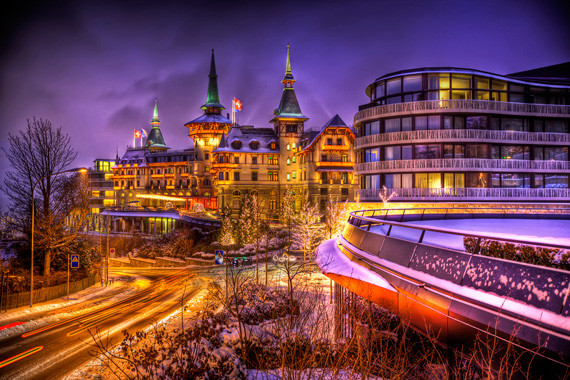Photography, which was once a passion of people, is now a full time profession of many. To help professionals bring out the best effect, several new technologies have been introduced in this field. With modern cameras and advanced equipments, photographers can now capture every angle with complete perfection.
One of the latest technologies, which have taken photography to new heights, is high dynamic range or HDR photography.

Photo by Marc Garrido Clotet.
What is High Dynamic Range or HDR Photography?
Before proceeding to HDR, it will be ideal to recapitulate dynamic range in a line. Dynamic range refers to the difference between darkest and lightest color value of a photograph or the photo contrast. High dynamic range is a technical jargon used in the field of photography to denote the photographs, which have the maximum dynamic range.
HDR images have more dynamic range compared to the ordinary digital cameras and produces high quality photographs.
HDR photography is a new concept and many of you may not have a clear idea about it. You need to know that HDR photographs are not unnecessarily colorful or unrealistically artistic. The purpose of using this technology is to increase the dynamic range, produce clear photographs by overcoming the restrictions of ordinary camera features. With this technique, one can compile three or more photographs snapped at different exposures and create a beautiful final product.

Photo by Richi Grafik.
Advantages of High Dynamic Range or HDR Photography
Nowadays, HDR photography has become a popular choice. If you are new to the field of photography, glancing through the advantages of HDR photography is worth it.
- With HDR technology, photographers can compile different photographs taken at variable exposures. Not only that but also this technique allows photographers create images with an excellent light detail, which is not possible in single shot taken by ordinary cameras. By using HDR cameras, photographers can capture excellent still photographs, in overexposed as well as underexposed settings. Though photographers have the freedom of adding several effects to the photographs, it is always recommended to keep the image as realistic as possible.
- Photography is an art and someone with best creative skills can flourish in this field. However, to cover up the lack of creative ideas, one can use HDR technology. Though this is not a common practice, at times one can really make some impressive art by using this technology. Yet, to capture the perfect angle, one should carry a tripod. One also needs to have the right photo editing software for editing the photograph and adding the required special effects.
Where To Learn HDR Photography?
Nowadays, there are several institutions offering professional HDR photography courses. One can enroll in any of the reputed institutions to learn HDR photography in complete details. It is also recommended to attend different photography workshops to increase the knowledge base on this type of photography. Regularly updating yourself about the latest introductions in this field can also be of great help in developing your skills and become an established photographer.
About the Author:
Rhommel Bernardino is the creator and webmaster of photographyarticles.net. He is a freelance photographer based in Toronto, Canada and has been shooting weddings, events, portraits, fashion, glamour and nudes for the last 5 years. He is also organizes photographic events like photo shootouts and occasionally hosts photography workshops in and around Toronto.
HDR Photography Software Deal Ending Soon:
The new Aurora HDR Pro Software recently secured an Editor’s Choice award for best new apps of 2015. It is a complete start-to-finish HDR toolkit, with revolutionary tone-mapping algorithms, one-click presets & powerful features. Aurora HDR combines everything we know about High Dynamic Range photography, and takes it light years further. For the month of May they are offering it with bonuses adding up to $ 100 in savings.
Going on here: Aurora HDR Pro Software Offer
Go to full article: What is HDR Photography?
What are your thoughts on this article? Join the discussion on Facebook
Article from: PictureCorrect
